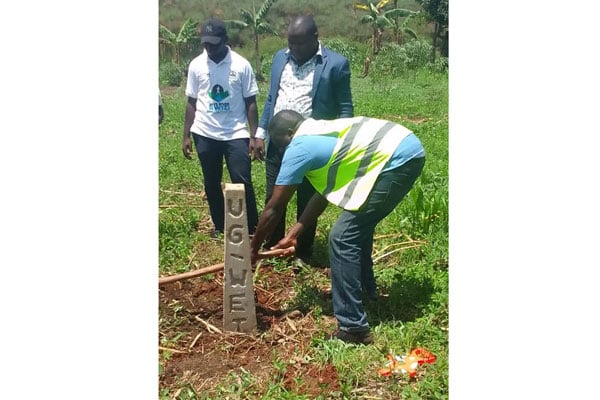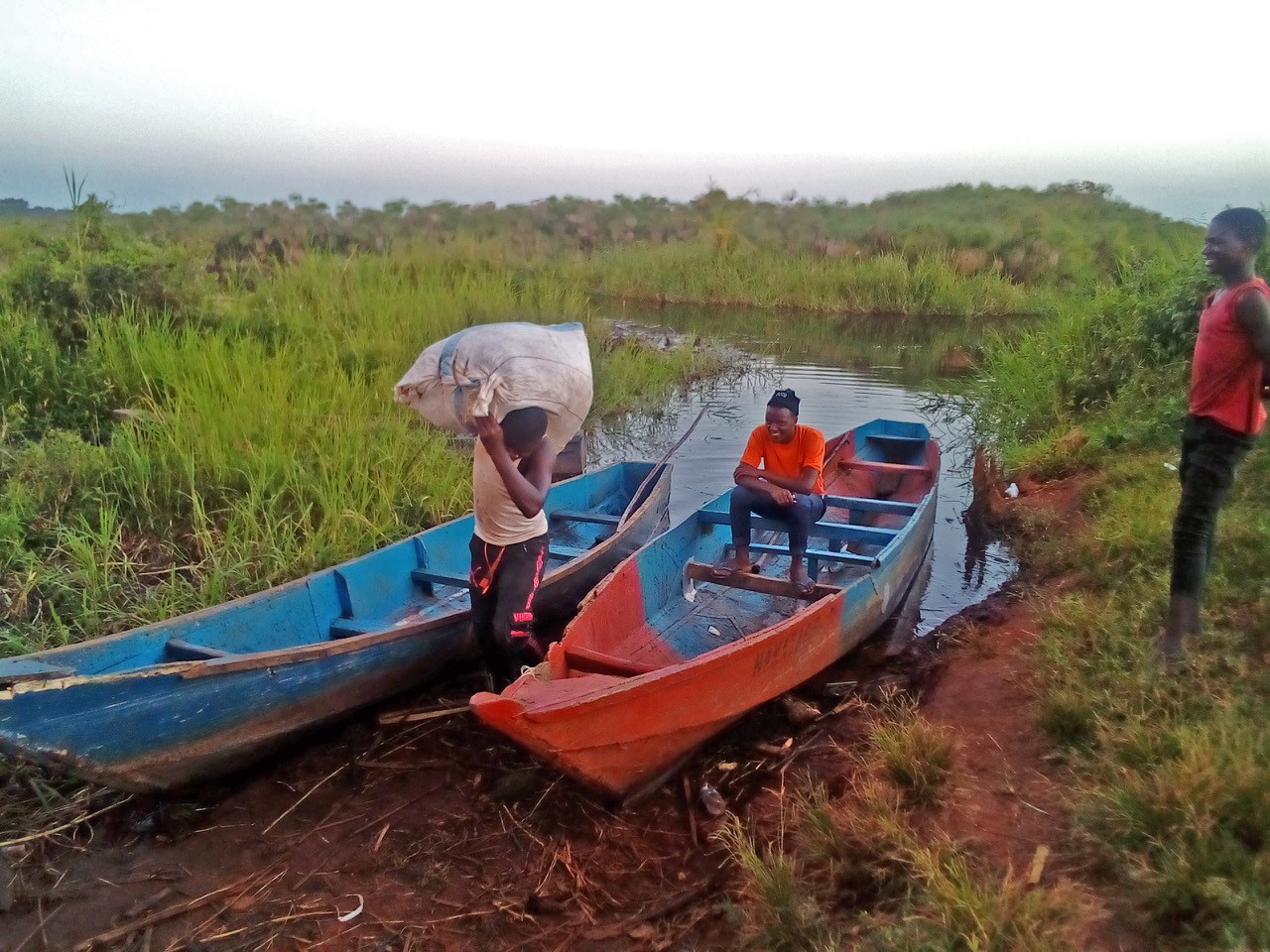Ssezibwa wetland encroachers protest new govt demarcation

Officials from the Ministry of Water and Environment erect a pillar on the boundary of Ssezibwa Wetland in Kisoga Village, Nazigo Sub-county in Kayunga District. PHOTO/FRED MUZAALE
What you need to know:
- The government has stepped up efforts to restore two rivers- Mayanja and Ssezibwa through the buffer zone demarcation exercise.
A section of residents in Nazigo Sub-county in Kayunga District, whose land border Ssezibwa Wetland, have protested the latest government demarcations.
The angry locals claim that a big chunk of their land was taken over by the government during the fixing of wetland boundaries.
The exercise, which is being conducted by officials from the Ministry of Water and Environment, started early this month and is still ongoing.
In a bid to restore the degraded Ssezibwa Wetland, the government erected pillars around the wetland, leaving a 30-metre buffer zone between conservation areas and land belonging to locals.
However, the affected landowners during a sensitisation meeting convened by Mr Deo Kabaalu, the senior wetlands officer at the Ministry of Water and Environment in Nazigo Sub-county on Wednesday, said the demarcation has left some of them with small pieces of land.
“The pillars were erected within our pieces of land,’’ Mr Fred Kizito, one of the affected land owners, said.
The sensitisation meeting was aimed at informing the residents about the demarcation programme to restore the wetland, which residents in the districts of Mukono and Kayunga, invaded and used for cultivation of crops.
Some of the residents were hoodwinked into buying pieces of land in the wetland, something that has greatly devastated the natural resource that passes through the districts of Mukono, Kayunga and Nakasongola.
A small stream of the hitherto big wetland is what is remaining with the river’s course diverted in some areas.
In 2020, officials from Nema met the encroachers and gave them a six-month ultimatum to vacate the wetland, but they refused to vacate.
Mr Benard Ssekiziyivu, the chairperson of Kisoga Village, said the affected landowners are unhappy and want the demarcation exercise to be repeated and the 30-metre buffer zone reduced to at least 20 metres.
Mr Sam Lumu, another land owner, said if the government cannot reduce the 30-metre buffer zone, they should be compensated for the land lost.
But Mr Kabaalu said: “We cannot negotiate reducing the size of the 30-metre buffer zone because it is within the law. But the land, which falls under the 30 metre buffer zone, has not been taken away from locals. They still own it, but carryout activities that don’t destroy the environment.’’
Mr Kabaalu added that locals can use the buffer zone for bee-keeping, tree growing and other farming activities.
He, however, said all encroachers should vacate before they are arrested and prosecuted. The wetland official also clarified that owners of the land located in the buffer zone are free to sell it because it still belongs to them.
Mr Patrick Musaazi, the Kayunga District natural resources officer, said the government had stepped up efforts to restore two rivers- Mayanja and Ssezibwa.
“The ditches dug by encroachers would be removed to allow smooth water flow,’’ he said.
Besides having unique flora and fauna, the Ssezibwa Wetland system acts as a store and regulates water flow.
Background
In 2016, district leaders went up in arms protesting the proposed giveaway of the wetland by the Uganda Lands Commission (ULC) to an investor for sugarcane growing. The protest forced ULC to back off.
On April 19, 2019, President Museveni ordered encroachers to vacate lakeshores and river banks before the National Environment Management Authority could catch up with them.
In December 2018, the Police Environmental Protection Unit evicted the encroachers, who also committed themselves never to go back into the wetland.
The most ruined sections of the wetland are located in Nazigo, Kayunga, Kasawo, and Kangulumira sub-counties.
What can now be seen in the most degraded sections are open farm fields from what was a soggy area filled with wild plants such as papyrus.
About wetland laws
Section 36 of Uganda’s National Environment Act provides for the protection of wetlands and prohibits any person from reclaiming, erecting, or demolishing any structure that is fixed in, on, under, or above any wetland. Uganda’s wetland coverage had reduced to 8 percent from 13 percent of the country’s land surface, according to the Ministry of Water and Environment data findings. Conservation experts argue that because of the depletion of wetlands, parts of the country receive long dry spells leading to the destruction of crops, and when the rain season starts, it is erratic leading to loss of lives and property.




